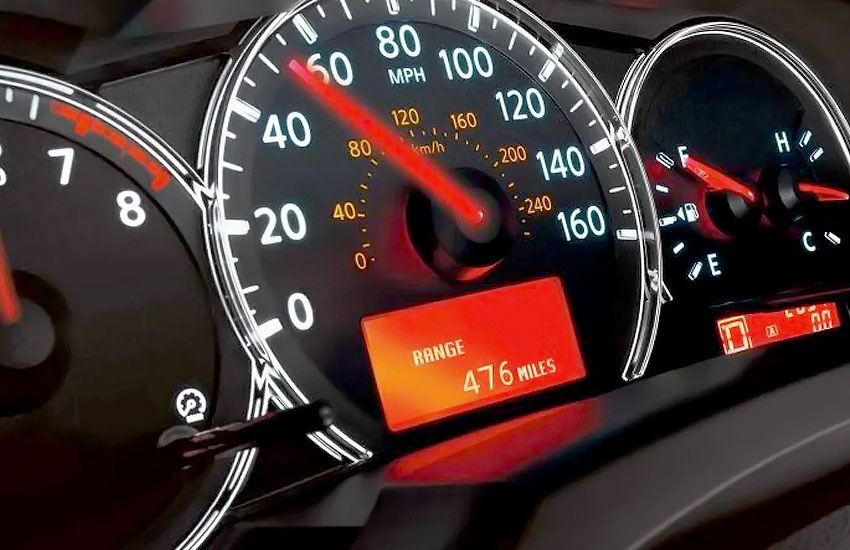The blinking red light in a car usually means the car’s security system is on. It’s a warning to thieves that the car has an alarm and is protected. The light blinks to show that the alarm is active and ready to alert if someone tries to break in. It’s a way for the car to deter theft and keep itself safe when parked. So, when you see the blinking red light, it means your car’s security is working to protect it.
In this article, we’ll explore what the blinking red light in your car means. This small but significant indicator serves an important role in your vehicle’s security system, signaling that it’s actively protecting against unauthorized access. Understanding its purpose can help you better appreciate how your car safeguards itself when parked.

Significance Of Blinking Red Light
Understanding what the blinking red light signifies can help drivers take immediate actions to prevent further damage to their vehicles or respond to emergency situations effectively.
Emergency Alert
The blinking red light in your car can serve as an emergency alert, highlighting the need for immediate attention. When you notice a consistent and rapid blinking red light, it is crucial to pull over to a safe location and assess the situation. This type of blinking light often indicates a major problem that requires immediate professional assistance.
Indicator Of Critical Issue
A blinking red light can also be an indicator of a critical issue with your vehicle. It is essential to understand the meaning behind different blinking patterns to diagnose the problem correctly:
- Steady Blinking: If the red light blinks steadily at a regular interval, it may be a sign of a low engine oil pressure. In such cases, immediate action is required to avoid engine damage. Pull over, check the oil levels, and if necessary, add more oil or seek professional help.
- Fast Blinking: A fast and irregular blinking red light often indicates an overheating engine. This can lead to severe engine damage or even a breakdown. Safely pull over, turn off the engine, and allow it to cool down. Check the coolant level and radiator for any leaks, and refill if necessary. If the problem persists, consult a mechanic.
- Alternating Blinking: An alternating blinking red light may indicate a malfunction in your car’s electrical system or a failing alternator. This can affect the battery’s charging, leading to potential power loss and an inability to start the car. In such instances, it is recommended to seek professional assistance to prevent further electrical issues.
Remember, as a responsible driver, it is crucial to understand the significance of the blinking red light in your car. Ignoring these warning signals can lead to more significant problems, expensive repairs, or even accidents. Regular vehicle maintenance and prompt action upon noticing the blinking red light can help ensure your safety on the road.
Deciphering Other Dashboard Lights
Different Colors And Their Meanings
When it comes to dashboard lights, different colors signify various issues. Knowing the significance of these colors can aid in quick identification and resolution of issues while driving:
- Red: Indicates a critical problem that requires immediate attention. It could be a flashing red light or a solid red warning icon.
- Yellow/Amber: Signals a non-urgent issue that needs to be addressed soon. It suggests caution and a visit to the service center.
- Green/Blue: Typically represents general vehicle information, such as turn signals, high beams, or indicators.
Key Dashboard Symbols to Know
Understanding key dashboard symbols is crucial for vehicle maintenance and safety. Here are some common symbols and their meanings:
| Symbol | Meaning |
|---|---|
| Engine Check Light | Indicates a potential issue with the engine or emissions system. |
| Oil Pressure Warning | Signals low oil pressure, requiring immediate oil level inspection. |
| Battery Alert | Warns about a malfunctioning charging system or low battery voltage. |
Addressing the Blinking Red Light
Immediate Actions to Take
Upon noticing a blinking red light in your car, the first step is to safely pull over to the side of the road or a parking lot. Turn off the engine and refer to your vehicle’s owner’s manual to identify the meaning of the blinking red light.
Some common indicators include low oil pressure, engine overheating, or a malfunction in the airbag system. If it’s a simple issue such as a loose gas cap, tightening it may resolve the problem. However, for more complex issues, it’s best to seek professional assistance – especially if the blinking red light is accompanied by unusual sounds or odors.
When to Seek Professional Help
If you’ve performed the initial troubleshooting and the blinking red light persists, or if you’re uncertain about the cause of the issue, it’s crucial to seek assistance from a certified mechanic or automotive technician.
Ignoring a persistent blinking red light can lead to further damage and potential safety hazards. Professional help is especially necessary if you notice any abnormal vehicle behavior, such as loss of power, excessive heating, or rough engine operation. Addressing the issue promptly can prevent more extensive and costly repairs in the future.
Preventive Maintenance
Routine Checks To Avoid Warning Lights
Performing routine checks on your car’s essential components can help identify potential problems before they escalate into warning lights. Here are a few routine checks you can do to avoid those dreaded blinking red lights:
- Check the engine oil level regularly to ensure it’s at the recommended level. Low oil levels can lead to engine damage and trigger warning lights.
- Inspect your car’s battery for any signs of corrosion or loose connections. A faulty battery can cause electrical issues, resulting in warning lights.
- Keep an eye on your tire pressure and tread depth. Underinflated tires or worn-out tread can impact your car’s performance and trigger warning lights.
- Monitor your car’s cooling system to prevent engine overheating. Regularly check the coolant level and ensure there are no leaks that could trigger warning lights.
- Inspect the brake system for any signs of wear or damage. Malfunctioning brakes can not only compromise your safety but also lead to warning lights.
Role Of Regular Servicing
Alongside routine checks, regular servicing is essential to keep your car in top condition and prevent warning lights from appearing. Carrying out regular servicing at recommended intervals helps in:
- Identifying and resolving potential issues before they become major problems.
- Ensuring all components are properly lubricated and functioning correctly, reducing the chances of warning lights.
- Checking and updating the various vehicle systems, including the engine, transmission, brakes, and electronics.
- Verifying the proper functioning of sensors, which play a vital role in detecting and triggering warning lights.
- Resetting any warning lights that were triggered falsely or resolved during the servicing process.
By adhering to routine checks and regular servicing, you can stay proactive in maintaining your car’s health and minimize the appearance of the blinking red light. Prioritizing preventive maintenance not only enhances your driving experience but also contributes to a longer lifespan for your beloved vehicle.
Cost And Consequences Of Ignoring Warnings
Ignoring warnings signaled by a blinking red light in your car can have significant financial and safety repercussions. Resolving the issue promptly is crucial to avoid costly repairs and potential accidents.
Financial Implications
- Ignoring the blinking red light could lead to mechanical failures that may escalate repair costs.
- Delaying necessary maintenance can result in costly breakdowns and potential engine damage.
Safety Risks
- Neglecting the warning may put you at risk of breaking down in unsafe locations, compromising your safety.
- Failure to address the issue promptly can lead to accidents due to malfunctioning parts.
Technology Advancements In Vehicular Alerts
Modern vehicles are equipped with advanced alert systems, including the blinking red light, to communicate important messages to drivers effectively.
Adaptive Systems for Enhanced Safety
Adaptive alert systems in cars adjust to various driving conditions for enhanced safety on the road.
Future Innovations
Continual advancements in vehicular alerts will lead to innovative features that prioritize driver and passenger safety.
Conclusion
To sum up, understanding the meaning of a blinking red light in a car is crucial for every driver. Whether it indicates a serious issue with the engine or a minor error, immediate attention is necessary to ensure safety on the road.
By being aware of the various reasons behind this warning signal, we can take appropriate action and prevent potential problems from escalating. So, the next time you encounter a blinking red light, don’t ignore it – address it promptly to keep your vehicle running smoothly.


